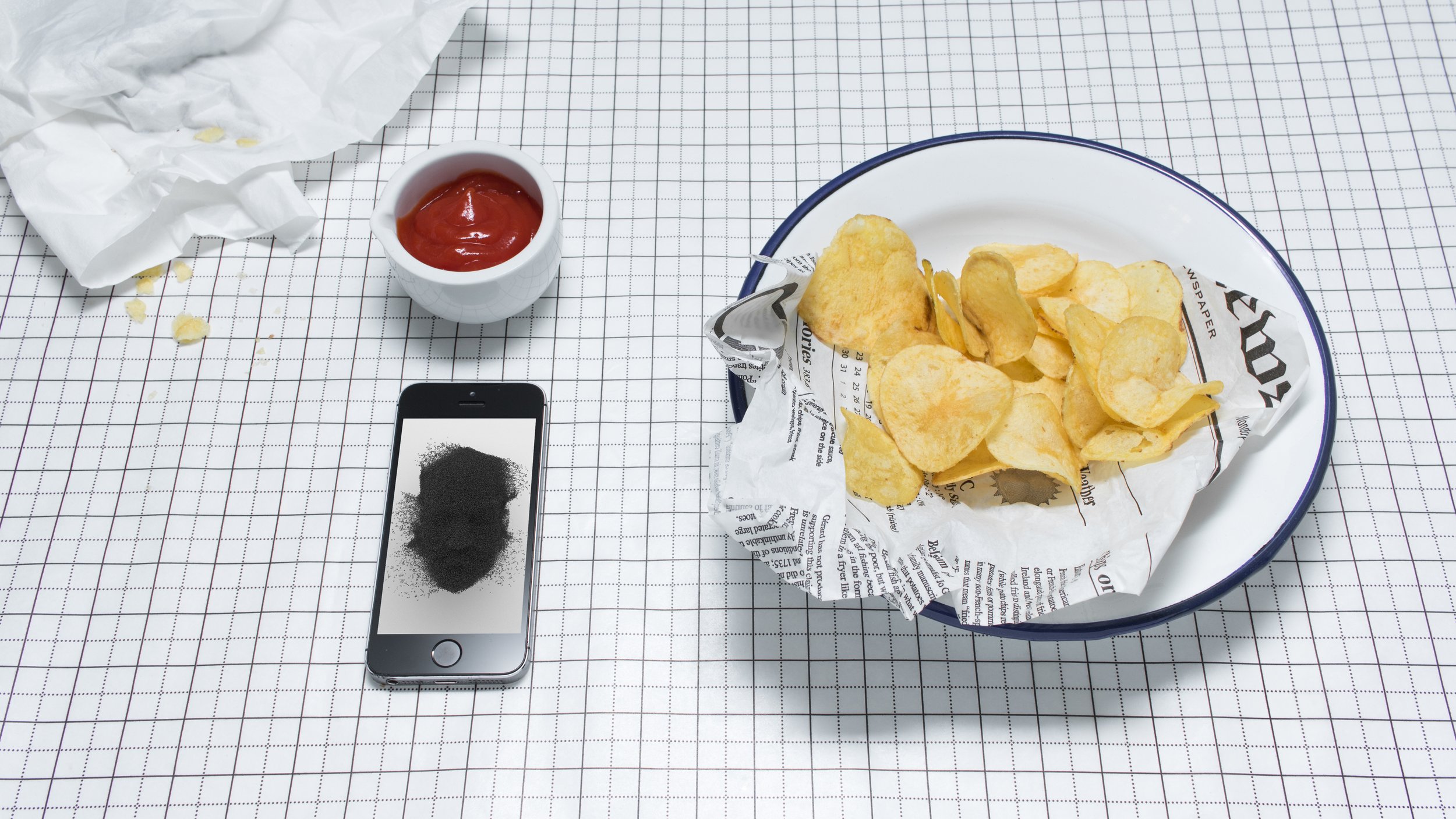We perceive food through different senses. Each sense brings information which our brain translates into expectations about food, flavour and the five basic tastes,- sweet, sour, umami, bitter and salty. According to the neurological research conducted by Charles Spence, elements like colour, shape, sound, temperature, and material can be used to intensify, indicate or create illusions about the taste. Each element contains information which our brain translates into physical sensations. In the digital world we live in today sometimes we miss out on a lot of information food gives us! Consider the amount of time spent in front of screens while eating. What if eating and digitalization would come together and create something new? Looking at a facial expression on a screen can awaken empathy; this can change our own experience of food. Like looking at someone eating lemon we know the food is going to be sour.
Combining empathy with material, color and overall feeling of a taste I create five taste visual digitalizations. Our mind creates taste expectations before food reaches the mouth,
so emphasizing this finding, I imagine taste could be created mostly if not only in our minds with the right tools. The food industry could employ these reactions by using Digital Seasoning and reducing the amounts of salt, msg, sugar and citric acid levels (amongst other compounds) in processed foods, thereby impacting healthier eating behaviour for the new digital era.
Graduation project 2018, Design Academy Eindhoven, Food Nonfood department
DIGITAL SEASONING











